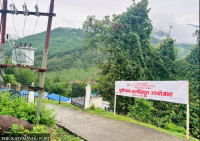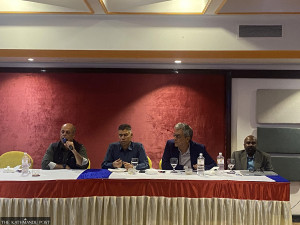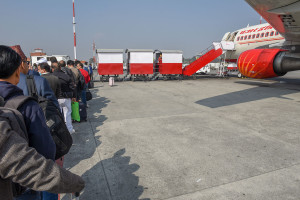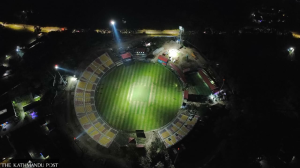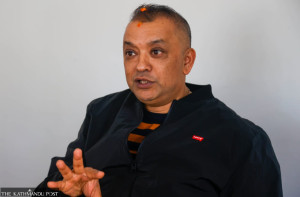Money
Paddy farmers scramble as monsoon explodes
With the heavens opening up sooner than usual, farmers got off to an early start and have finished transplanting paddy on nearly one-fourth of the country’s fields as of July 2. This is the fastest transplantation rate in many years, said officials.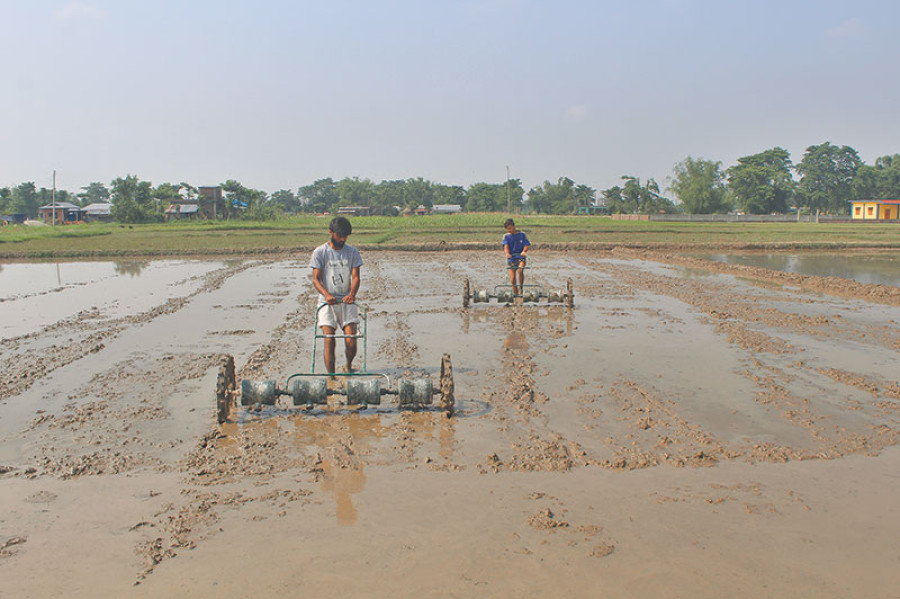
With the heavens opening up sooner than usual, farmers got off to an early start and have finished transplanting paddy on nearly one-fourth of the country’s fields as of July 2. This is the fastest transplantation rate in many years, said officials.
Figures released by the Agricultural Ministry on Tuesday showed that transplantation has been completed on 22 percent of the 1.55 million hectares of paddy fields. During the same period last year, transplantation was completed on 20 percent of the fields.
“The sole reason for the faster transplantation is the early monsoon which entered Nepal two days earlier this year compared to its normal schedule,” said Ram Krishna Regmi, chief statistician at the ministry.
This year the rains started pouring down on June 8. Regmi said the impact of the monsoon on the agriculture sector, particularly the paddy crop, would be visible if transplantation also increases in the Tarai, the country’s food basket.
Normally, paddy transplantation in the Tarai gets into full swing from July-end.
“During this period, if there is good and unified rainfall, the transplantation coverage will increase,” said Regmi, adding that rain during the top-dressing in August is also vital because it increases productivity. “If the rainfall pattern is as good as projected, we can expect a bumper paddy harvest of up to 5.5 million tonnes in the next fiscal year.”
Paddy production jumped 21.66 percent to a record 5.23 million tonnes in 2016-17 and dropped 1.49 percent to 5.15 million tonnes this fiscal year. According to the ministry, the transplantation rate is higher in the far western region with 50.21 percent of the total 176,560 hectares planted to paddy.
Likewise, the transplantation rate in the mid-western and western regions has been recorded at 29.72 percent of the 178,096 hectares and 24.84 percent of the 312,547 hectares respectively. The transplantation rate in the central and eastern regions has been recorded at 11.66 percent of the 439,328 hectares and 16.19 percent of the 445,938 hectares respectively.
According to the ministry, paddy transplantation in the Tarai has been completed on 18.65 percent of the 1.09 million hectares.
Transplantation in the mountain region has been completed on 38.21 percent of the 58,158 hectares while in the hilly region the rate is 29.09 percent of the 399,675 hectares. Transplantation in the Tarai region has not speeded up due to late winter crop harvests like maize.
The transplantation season normally extends until mid-August in the Tarai plains. The Tarai, which is the major paddy producing region in the country, contains 71 percent of its rice fields. The hilly region contains 25 percent and the mountain region 4 percent.
According to the ministry, the lowest transplantation rate was observed in Banke district with 0.55 percent, followed by Saptari (1.50 percent), Parsa (3 percent), Mahottari (3.5 percent), Dhanusha (7 percent) and Siraha, Bara and Sarlahi (8 percent each).




 20.12°C Kathmandu
20.12°C Kathmandu


